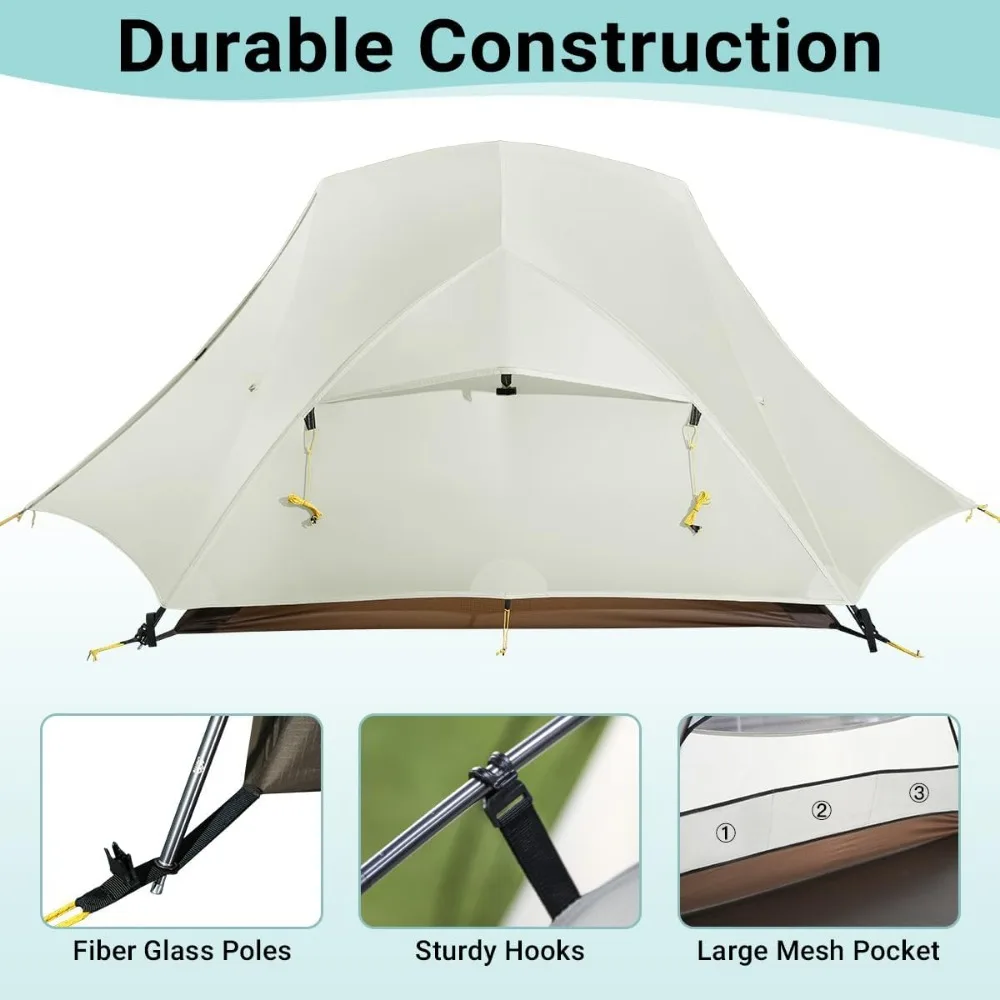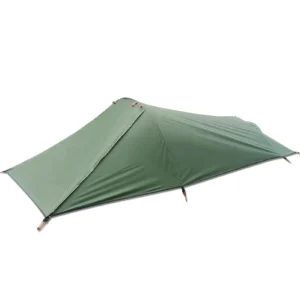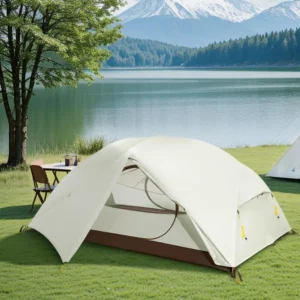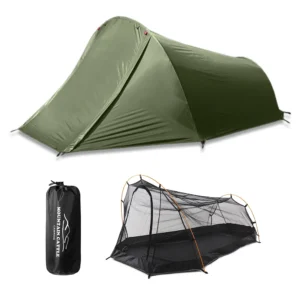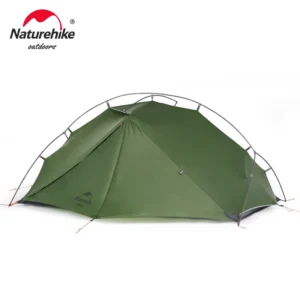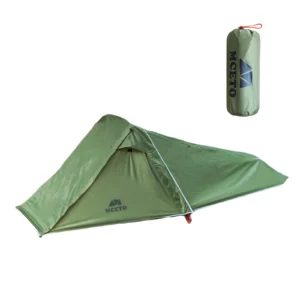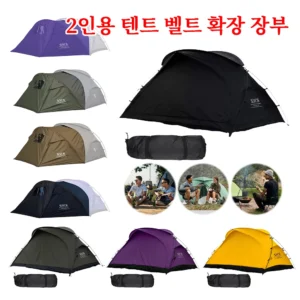1. Introduction: Understanding the Importance of Tent Weight
When venturing into the backcountry, every ounce on your back matters. For serious backpackers, choosing the right tent isn’t just about shelter—it’s about finding the perfect balance between protection, comfort, and weight. The difference between carrying a 4-pound tent versus a 2-pound tent might seem minimal on paper, but after hiking 15 miles, those two pounds can significantly impact your fatigue level, hiking pace, and overall enjoyment.
In the backpacking community, the terms “ultralight” and “lightweight” are often used interchangeably, creating confusion for both newcomers and experienced hikers alike. However, these categories represent distinct design philosophies and performance characteristics—not just arbitrary weight differences. Understanding the nuances between them is crucial for selecting gear that aligns with your specific needs.
This comprehensive guide aims to clear up the confusion surrounding these tent classifications. We’ll dive deep into their definitions, compare materials and construction techniques, analyze comfort and livability factors, and evaluate their performance in various conditions. By understanding these shelter options for two campers, you’ll be equipped to make an informed decision that enhances rather than hinders your backcountry experience.
2. Defining the Categories: Weight Classification Explained
Before comparing features and performance, let’s establish clear definitions for these tent categories based on weight benchmarks widely accepted in the backpacking community.
Ultralight Tents
Ultralight tents represent the minimalist approach to backcountry shelter, prioritizing weight savings above all else. For solo tents, the ultralight classification typically applies to shelters weighing under 2 pounds (0.9 kg). For 2-person tents, the ultralight threshold is generally under 3 pounds (1.36 kg).
These shelters align with the broader ultralight backpacking philosophy that aims to keep base weight (all gear excluding consumables like food and water) below 10 pounds. For dedicated thru-hikers and long-distance backpackers, this weight reduction translates directly into less fatigue and increased daily mileage.
Lightweight Tents
Lightweight tents strike a more balanced approach, offering reduced weight while maintaining more comfort features and durability. They typically weigh between 2-4 pounds (0.9-1.8 kg) for a 2-person model. These tents represent a sweet spot for many weekend backpackers and those unwilling to make significant compromises on space and features.
Traditional/Standard Backpacking Tents
For context, traditional backpacking tents generally weigh 4.5+ pounds (2+ kg) for a 2-person model. While heavier, they often provide more interior space, additional features, and greater durability at a lower price point.
Understanding whether 2kg for a tent is too heavy depends entirely on your specific needs and conditions.
Weight Classification Comparison
| Tent Type | Solo Weight Range | 2-Person Weight Range |
|---|---|---|
| Ultralight | Under 2 lbs (0.9 kg) | Under 3 lbs (1.36 kg) |
| Lightweight | 2-3 lbs (0.9-1.36 kg) | 3-4.5 lbs (1.36-2.0 kg) |
| Traditional | 3+ lbs (1.36+ kg) | 4.5+ lbs (2.0+ kg) |
3. Materials & Construction: The Science Behind Weight Reduction
The dramatic weight differences between tent categories aren’t magical—they’re the direct result of specific material choices and construction techniques, each with distinct advantages and limitations.
Ultralight Tent Materials
Dyneema Composite Fabric (DCF)
Formerly known as Cuben Fiber, DCF represents the pinnacle of ultralight materials. This non-woven composite fabric combines Dyneema fibers (15 times stronger than steel by weight) with polyester films, creating an incredibly lightweight yet strong material. DCF offers exceptional waterproofing without needing additional coatings and doesn’t stretch when wet—a significant advantage in rainy conditions. However, it comes with substantial drawbacks: extremely high cost (often doubling or tripling tent price), poor abrasion resistance, and limited UV durability compared to other fabrics.
Ultra-thin Silnylon/Silpoly (7-15D)
Many ultralight tents use extremely thin silicone-impregnated nylon or polyester with very low denier counts (7-15D). These fabrics significantly reduce weight while maintaining reasonable waterproofing, but at the cost of durability. The lightweight trekking shelter materials used in these designs require careful handling to prevent punctures and tears.
Lightweight Tent Materials
Medium-weight Silnylon/Silpoly (15-30D)
Lightweight tents typically employ silicone-impregnated fabrics in the 15-30 denier range, striking a balance between weight reduction and reasonable durability. These materials can withstand more abuse than their ultralight counterparts while adding only moderate weight.
PU-coated Nylon and Polyester
Polyurethane-coated fabrics are common in lightweight tents, offering good waterproofing at a lower price point than silicone-impregnated options. Though slightly heavier, they provide better puncture resistance and durability for general backpacking use.
Pole Systems
Carbon Fiber
Ultra-lightweight carbon fiber poles can reduce weight by 20-30% compared to aluminum alternatives. Common in premium ultralight designs, these poles offer excellent strength-to-weight ratio but come at a significantly higher price and with greater vulnerability to breakage under extreme stress.
Aluminum Alloy
Most lightweight tents use high-quality aluminum alloy poles (often DAC brand), balancing reasonable weight with good durability and affordability. These poles can withstand more abuse than carbon fiber alternatives.
Trekking Pole Support
Many ultralight trekking pole tents eliminate dedicated poles altogether, using the trekking poles you’re already carrying to support the structure. This design philosophy can save up to a pound but requires flat ground for setup and assumes you already use trekking poles while hiking.
Construction Approaches
Single-wall Construction
To save weight, many ultralight shelters use single-wall construction where one layer serves as both rain protection and living space. This eliminates the weight of a separate inner tent but often leads to increased condensation on interior surfaces.
Double-wall Construction
Most lightweight tents feature double-wall construction with a separate mesh inner tent and waterproof rainfly. This design enhances ventilation and condensation management at the cost of additional weight.
The denier rating of fabrics (shown as “D” in specifications) directly correlates with fabric weight and durability—lower numbers mean lighter but less durable materials. The difference between 10D and 30D fabric isn’t just three times the weight; it represents a fundamental tradeoff between portability and longevity.
4. Head-to-Head Comparison: Key Features Beyond Weight
While weight savings drives the ultralight category, numerous other important differences exist between these tent types. This comprehensive comparison helps illustrate why choosing between them involves much more than just looking at the scale.
| Feature | Ultralight Tents | Lightweight Tents |
|---|---|---|
| Weight (2P) | 1-3 lbs (0.45-1.36 kg) | 3-4.5 lbs (1.36-2.0 kg) |
| Packed Size | Very small (water bottle sized) | Small to moderate (loaf of bread) |
| Weather Resistance | Good to excellent rain protection; moderate wind stability | Excellent rain protection; good to excellent wind stability |
| Interior Space | Minimalist, often tapered | More generous, typically rectangular |
| Peak Height | Lower (35-40 inches/89-102 cm) | Higher (40-45 inches/102-114 cm) |
| Setup | Often more complex; may require practice | Generally straightforward |
| Pole System | Trekking poles or minimal lightweight poles | Dedicated pole structure |
| Features | Minimal; basic vestibules | More extensive; multiple pockets, larger vestibules |
| Durability | Limited; requires careful use | Moderate to good; withstands regular use |
| Price Range | $300-700+ | $200-400 |
| Lifespan | 1-3 seasons of heavy use | 3-5+ seasons of regular use |
These differences stem from intentional design choices rather than flaws. Ultralight backpacking tents are purpose-built for covering maximum distance with minimal fatigue, while lightweight options prioritize a more comfortable balance for the average backpacker.
Within each category, significant variation exists—some ultralight tents offer surprising durability, while some lightweight models approach ultralight territory through clever design. This spectrum of options allows backpackers to find their personal sweet spot between weight savings and comfort features.
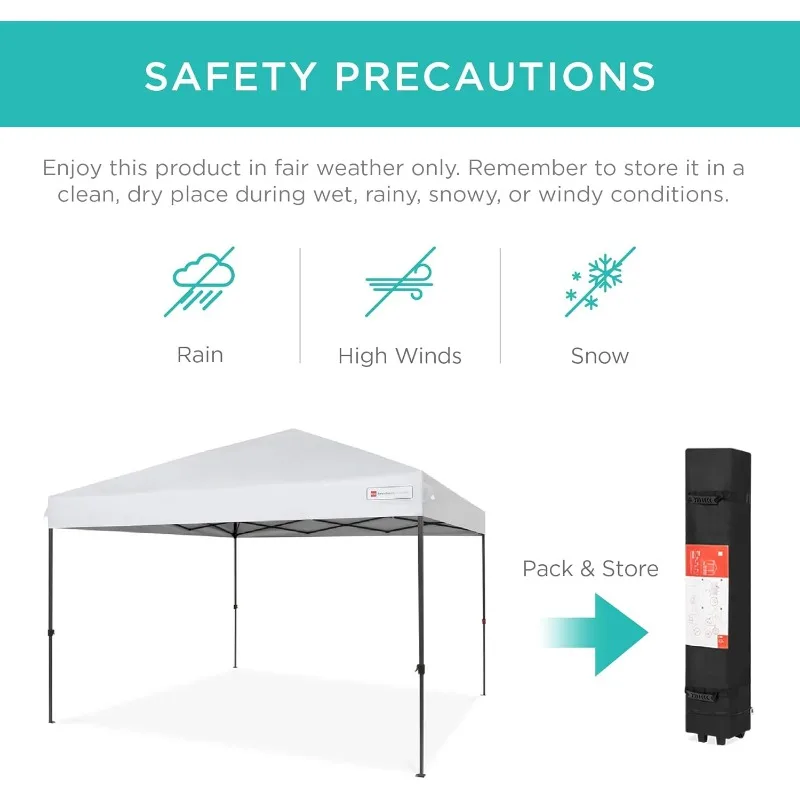
5. Living Space & Comfort: The Invisible Tradeoff
The weight difference between tent categories doesn’t just come from thinner materials—it often involves sacrificing interior space and comfort features that aren’t immediately apparent when browsing specifications online.
Key Comfort Factors
Floor Dimensions
Ultralight tents typically feature smaller floor plans, often with tapered foot areas to reduce fabric use. A typical ultralight 2-person tent might offer 28-30 square feet of floor space, while lightweight options generally provide 32-36 square feet. This difference becomes particularly noticeable when sharing the tent with a partner or during extended weather delays when you’re tent-bound.
Peak Height
The ability to sit upright significantly impacts comfort during longer trips. Ultralight designs commonly feature peak heights around 38-40 inches (97-102 cm), while lightweight models often reach 42-45 inches (107-114 cm). This seemingly small difference dramatically affects livability when changing clothes or organizing gear.
Wall Steepness
Vertical or near-vertical walls create more usable interior space than sloped walls, which limit headroom to the center area only. Many ultralight designs sacrifice wall steepness for weight savings, effectively reducing usable space beyond what floor dimensions suggest.
Doors and Access
Ultralight tents often feature single doors to save weight, which means crawling over your partner for night-time bathroom breaks. Most lightweight options include dual doors and vestibules for convenient access and separate storage.
Vestibule Space
When backcountry weather turns nasty, vestibule space for cooking and gear storage becomes invaluable. Lightweight tents typically offer more generous vestibules than their ultralight counterparts, providing protected space for wet boots and cooking in foul weather.
Maximizing space and comfort in ultralight shelters requires specific techniques and expectations management. The trade-off is real, but understanding how to optimize your limited space can mitigate some comfort concerns.
For those prioritizing comfortable backcountry living, backpacking tent vestibules provide valuable additional protected space without significantly increasing carried weight.
6. Setup & Design: Freestanding vs. Non-Freestanding Systems
The structural design of your tent directly affects where and how easily you can set it up—a consideration that becomes particularly important when arriving at camp exhausted or in challenging weather conditions.
Non-Freestanding Systems (Common in Ultralight Tents)
These designs require staking to achieve their structure and often use trekking poles for support.
Pros:
– Significantly lighter weight
– Often pack smaller
– Fewer poles to break
– Can be more wind-resistant when properly pitched
Cons:
– Require suitable ground for stakes
– More challenging on rock, sand, or frozen surfaces
– Generally more complex and time-consuming setup
– Steeper learning curve for proper pitching
– Limited flexibility in campsite selection
Semi-Freestanding Systems
These hybrid designs can stand on their own but require stakes to achieve full structure and stability.
Pros:
– More versatile than non-freestanding tents
– Moderate weight savings
– Easier setup than fully non-freestanding designs
– More forgiving of imperfect campsite conditions
Cons:
– Still require some staking for optimal performance
– Heavier than non-freestanding options
– Sometimes compromise on headroom or stability
Fully Freestanding Systems (Common in Lightweight Tents)
These tents can be set up completely without stakes, though staking is still recommended for stability.
Pros:
– Easiest and fastest setup
– Can be pitched on any surface (rock, sand, platforms)
– Simple to move or reposition after setup
– More beginner-friendly
Cons:
– Heavier due to comprehensive pole structure
– Often bulkier when packed
– May perform worse in high winds than well-staked designs
Understanding freestanding tent structure helps clarify these differences and their practical implications for your camping style. For backpackers frequently encountering challenging terrain or designated platforms, freestanding backpacking tents offer significant convenience despite their slightly higher weight.
7. Durability & Longevity: Understanding the Lifespan Difference
Perhaps the most significant practical difference between ultralight and lightweight tents is their expected durability and lifespan—a factor that directly impacts long-term value despite not appearing on specification sheets.
The durability of ultralight hiking tents varies significantly based on construction and materials, but generally, the weight-to-durability ratio follows a predictable pattern: lighter materials simply don’t last as long under regular use.
Common Failure Points
- Floors: Ultralight floors (often 10-15D) can puncture or abrade much faster than lightweight alternatives (usually 20-30D or higher)
- Zippers: Smaller, lighter zippers on ultralight models tend to fail earlier, especially in dusty or sandy conditions
- Seams: Ultralight fabrics provide less material for sturdy seams, leading to earlier failure points
- Mesh: Ultralight no-see-um mesh tears more easily than heavier alternatives
Extending Tent Life
To maximize the lifespan of any tent, especially ultralight models:
- Always use a groundsheet or footprint
- Handle zippers with care, using two hands when possible
- Clean and dry completely before storage
- Repair minor damage immediately before it spreads
- Avoid prolonged UV exposure when not in use
- Consider site selection carefully to reduce abrasion and wind stress
Long-Term Value Consideration
While ultralight tents typically cost 30-50% more than comparable lightweight models initially, their shorter lifespan makes this gap even more significant over time. An ultralight tent might need replacement after 2-3 seasons of heavy use, while a well-maintained lightweight tent could last 5-7 seasons.
This durability difference creates an important consideration: for occasional backpackers, the ultralight premium might not deliver sufficient value to offset the higher initial cost and shorter lifespan.
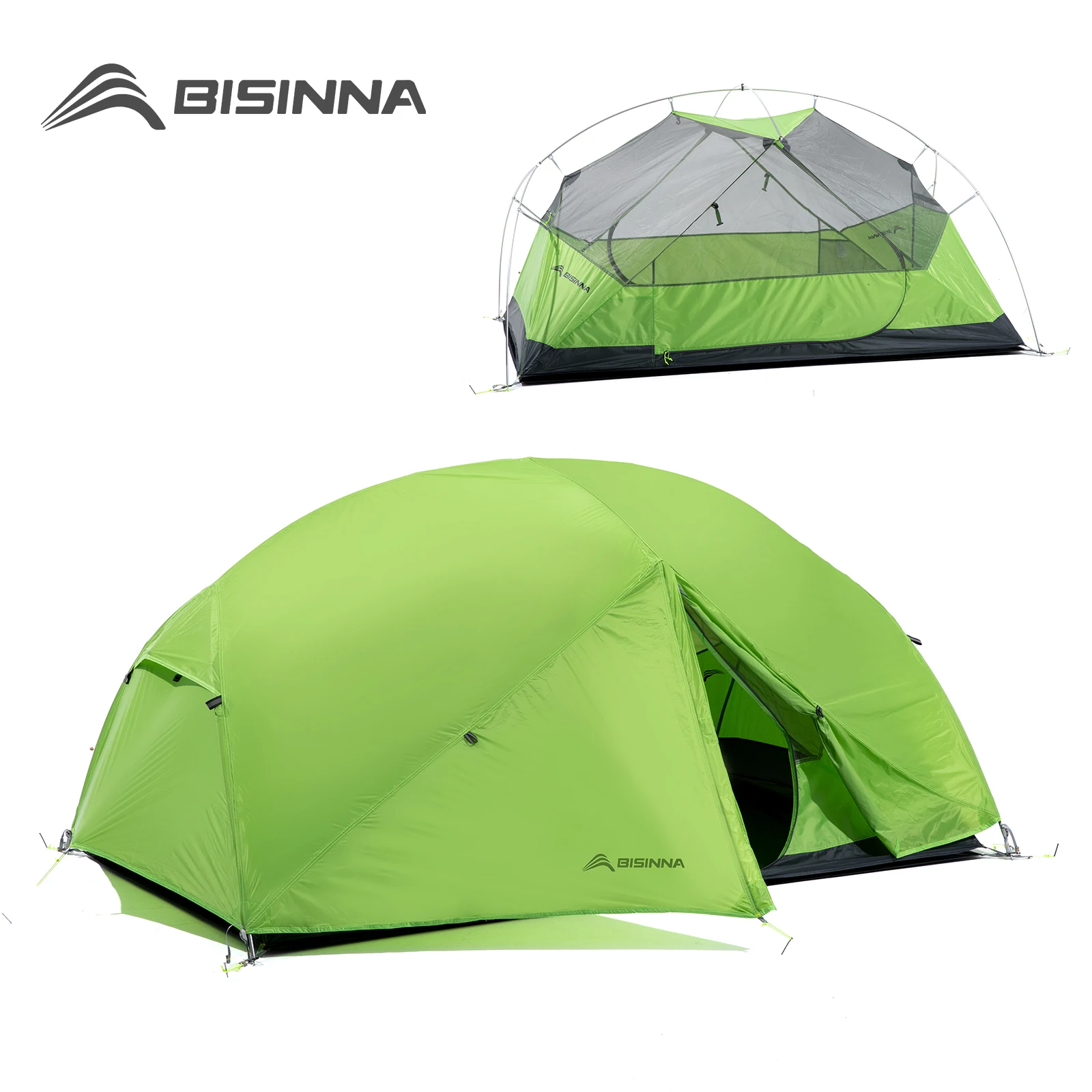
8. Weather Protection: Performance in Challenging Conditions
Despite common misconceptions, ultralight doesn’t necessarily mean less weather protection—but the protection comes in different forms with different limitations compared to lightweight designs.
Rain Protection
Modern ultralight tents, particularly those using Dyneema Composite Fabric, offer excellent waterproofing—often superior to conventional tents using coated fabrics. However, their resistance to sustained, driving rain can vary based on design rather than materials. Lightweight tents typically feature more comprehensive rainfly coverage and better protected entrances, reducing the risk of water penetration during entry/exit in rainy conditions.
Wind Performance
Wind stability depends more on design than weight category. Well-designed ultralight tents with proper guylines can withstand significant wind—sometimes outperforming heavier alternatives. However, lightweight tents generally offer more structural stability in moderate winds without perfect staking, making them more forgiving for average users.
Condensation Management
This is where meaningful differences emerge. Single-wall ultralight shelters and those with minimal ventilation often struggle with condensation in humid conditions. Double-wall lightweight tents with purpose-built ventilation systems typically manage moisture much better, keeping sleeping bags and gear drier during multi-day trips.
Seasonal Capabilities
While most tents in both categories are marketed as 3-season, their practical seasonal range varies. Many ultralight models perform poorly in early spring and late fall conditions when snow loads or freezing rain may occur. Lightweight tents with stronger pole structures and more weather-resilient designs often extend comfortably into shoulder seasons.
For backpackers venturing into varied or unpredictable conditions, waterproof backpacking tents with comprehensive weather protection offer additional peace of mind despite modest weight penalties.
9. The Real-World Decision: Which Type is Right for You?
Rather than declaring one category superior, consider which tent type aligns with your specific backpacking style, priorities, and conditions.
When to Choose Ultralight:
- Thru-hiking or long-distance backpacking where every ounce impacts daily mileage and fatigue
- Experienced backpackers who understand the limitations and required care
- Fair-weather backpackers who rarely encounter extreme conditions
- Solo sleepers using a 2-person tent who want extra space without weight penalty
- Those with physical limitations where reduced pack weight significantly improves hiking ability
- Gram counters pursuing the lightest possible base weight as a primary goal
When to Choose Lightweight:
- Weekend warriors and occasional backpackers who value comfort and durability
- Beginners still developing their technique and site selection skills
- All-season adventurers who backpack in varied or unpredictable weather
- Those sharing tents where interior space directly impacts trip enjoyment
- Backpackers on a budget seeking better long-term value and durability
- Rough-terrain hikers frequently camping on abrasive surfaces or in exposed areas
Decision Framework Questions:
- How important is saving every possible ounce in your pack?
- How often do you backpack, and how many nights annually will you use the tent?
- Do you typically hike in relatively predictable weather or variable conditions?
- Are you willing to be extra careful with campsite selection and gear handling?
- What’s your budget, both initially and for potential replacement?
- How important is interior comfort during extended weather delays?
Mastering two-person lightweight tent setup skills can help mitigate some of the convenience advantages of freestanding designs, making lightweight non-freestanding options more attractive to those developing their backcountry skills.
10. Beyond Weight: Other Critical Factors to Consider
While the weight comparison dominates the ultralight versus lightweight discussion, several other equally important factors should influence your tent selection.
True Capacity
Tent manufacturer capacity ratings often assume tight quarters. A “2-person” ultralight tent frequently accommodates two sleepers with no space for gear inside, while what size tent is good for 2 people depends entirely on your relationship and comfort preferences. For couples or those desiring personal space, sizing up might be worth the weight penalty.
Packed Volume
Weight isn’t the only space constraint—packed volume matters too. Some lightweight tents compress smaller than ultralight alternatives despite weighing more, particularly when comparing aluminum poles to bulkier carbon fiber designs. This difference matters when using smaller backpacks or distributing gear among group members.
Seasonal Appropriateness
Consider your typical backpacking season and location. Ultralight designs excel in summer conditions but may struggle during shoulder seasons when stronger storms and colder temperatures demand more robust protection and condensation management.
Ventilation Needs
Your body releases approximately one pint of moisture through respiration and perspiration during sleep. In humid environments or when regularly sharing the tent, adequate ventilation becomes crucial for comfort—a feature often reduced in ultralight designs.
Site Selection Requirements
Ultralight tents, particularly non-freestanding models, demand more careful site selection and preparation. If you frequently camp in areas with limited ideal tent spots or on established platforms, freestanding designs offer significant practical advantages.
Specialized Needs
Consider unique requirements like stargazing capabilities, photography access, gear storage for specialized equipment, or accessibility features that might override pure weight considerations.
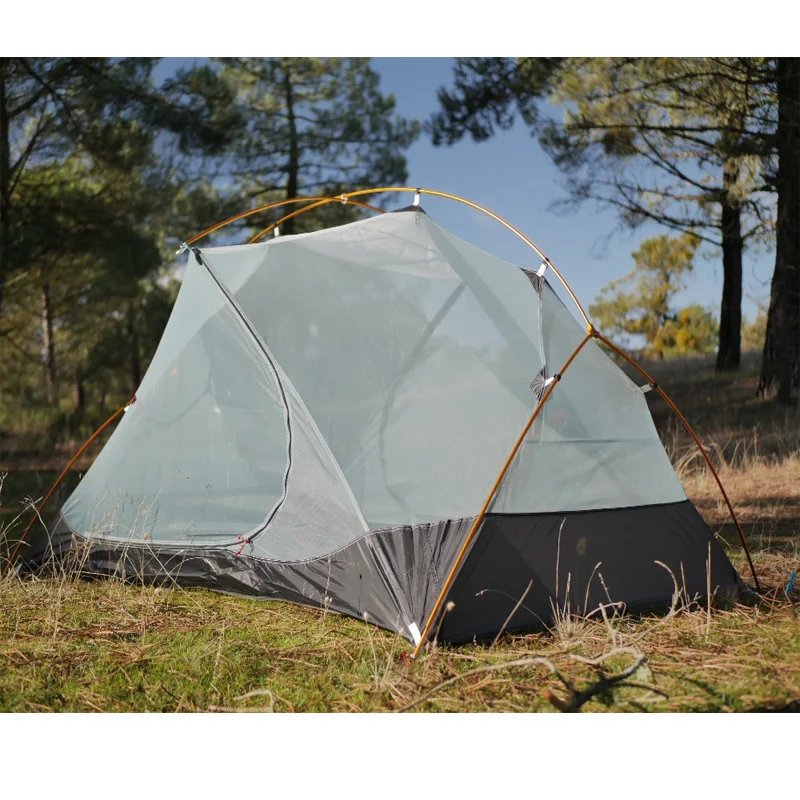
Lightweight Backpacking Tent, Ultralight Backpacking Tent, Ultralight Bivy Tent
Ultralight Single Person Camping Tent with Aluminum Poles for 3-Season Backpacking Waterproof DesignPrice range: $94.88 through $326.82 Select options This product has multiple variants. The options may be chosen on the product pageLightweight Backpacking Tent, Ultralight Backpacking Tent, Waterproof Backpacking Tent
$391.05 Select options This product has multiple variants. The options may be chosen on the product pageCompact Backpacking Tent, Lightweight Backpacking Tent, Waterproof Camping Tent
$335.52 Select options This product has multiple variants. The options may be chosen on the product pageUltralight Backpacking Tent, Ultralight Dome Tent, Winter Camping Tent
Price range: $369.63 through $370.07 Select options This product has multiple variants. The options may be chosen on the product pageBackpacking Tent with Vestibule, Freestanding Backpacking Tent, Lightweight Backpacking Tent
Price range: $446.89 through $447.22 Select options This product has multiple variants. The options may be chosen on the product pageBackpacking Tent with Vestibule, Trekking Pole Backpacking Tent, Waterproof Camping Tent
Price range: $271.99 through $519.52 Select options This product has multiple variants. The options may be chosen on the product page
When selecting your ideal backpacking shelter, explore the full range of lightweight backpacking tents to find the perfect balance for your specific needs. Remember that the perfect tent isn’t the lightest one available—it’s the one that best serves your particular backpacking style while balancing weight, durability, comfort, and weather protection.
11. FAQ: Common Questions About Ultralight and Lightweight Tents
Are ultralight tents worth the higher cost?
For dedicated long-distance hikers covering substantial mileage, the weight savings can justify the premium price. For occasional weekend backpackers, the value proposition becomes less clear when considering durability and lifespan differences. Calculate your cost-per-night over the expected lifespan to make an informed decision.
How much less durable are ultralight tents really?
The durability gap varies significantly between models but exists in almost all cases. Ultralight floors and fabrics typically show wear 2-3 times faster than their lightweight counterparts under identical conditions. With exceptional care, this difference can be minimized but rarely eliminated.
Can beginners use ultralight tents successfully?
Yes, but with important caveats. Beginners should expect a steeper learning curve for proper setup and site selection. For those new to backpacking, starting with a lightweight tent builds experience before transitioning to ultralight options that require more technical knowledge.
What’s the difference between minimum trail weight and packed weight?
Minimum trail weight typically includes only the tent body, rainfly, and poles—the absolute minimum needed for setup. Packed weight includes everything that comes in the package: stakes, stuff sacks, repair kits, and guy lines. Your actual carried weight will likely fall between these two figures.
How do I properly care for ultralight materials?
Clean with gentle soap and water, never machine wash, always dry completely before storage, store loosely in a cool dry place, repair small tears immediately, use groundsheets consistently, and minimize UV exposure when not in use.
Are single-wall or double-wall tents better?
Neither is universally superior. Single-wall designs excel in weight savings and simplicity but struggle with condensation. Double-wall tents manage moisture better and offer more versatility at the cost of additional weight. Your typical climate and condensation concerns should drive this decision.
Can I use an ultralight tent in winter conditions?
Most ultralight 3-season tents aren’t designed for significant snow loads or winter camping. While some specialized ultralight winter tents exist, most backpackers needing true four-season protection should consider purpose-built winter shelters that prioritize strength over weight savings.
Many backpackers wonder is a 2-person tent actually big enough for comfortable use. The answer depends entirely on your relationship with your tent partner, sleeping pad size, and personal space preferences.
12. Key Terminology: Understanding Tent Specifications
When comparing tent specifications, understanding the terminology helps you interpret what the numbers actually mean for real-world performance:
Minimum Trail Weight: The weight of just the tent body, rainfly, and poles without stakes, stuff sacks, or accessories. This is the most optimistic weight figure.
Packaged Weight: The total weight of everything included with your purchase, including all accessories, packaging, and instructions.
Denier (D): A measurement of fabric thickness where lower numbers indicate thinner, lighter fabrics (10D is much thinner than 70D).
Hydrostatic Head (mm): Measures waterproofing effectiveness by indicating water pressure a fabric can withstand before leaking. Higher numbers mean better waterproofing (2000mm is adequate; 5000mm is excellent).
Single-Wall Construction: A design using one layer of waterproof/breathable fabric for the tent body, saving weight but often creating condensation challenges.
Double-Wall Construction: A design with a separate mesh inner tent and waterproof outer rainfly, improving ventilation and condensation management.
Freestanding: A tent that can stand completely on its own without stakes or guylines (though staking is still recommended).
Semi-Freestanding: A tent that mostly stands on its own but requires some staking to achieve full structure.
Non-Freestanding: A tent that requires staking and/or trekking poles for structural support.
Common Fabric Abbreviations:
– DCF: Dyneema Composite Fabric (formerly Cuben Fiber)
– Silnylon: Silicone-impregnated nylon
– Silpoly: Silicone-impregnated polyester
– PU: Polyurethane coating
Understanding these terms helps you look beyond marketing claims to make informed comparisons based on features that matter most for your specific backpacking needs and conditions.

